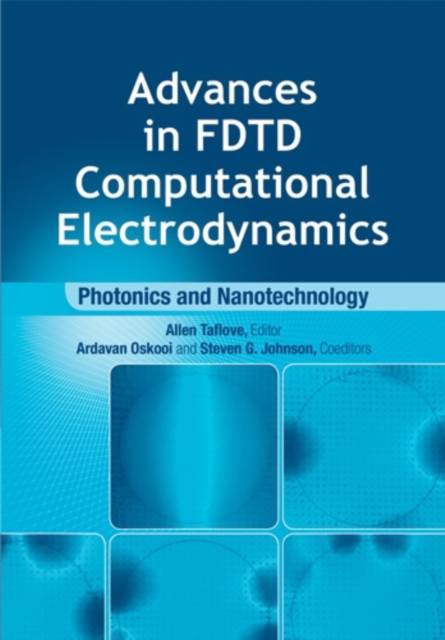
- Retrait gratuit dans votre magasin Club
- 7.000.000 titres dans notre catalogue
- Payer en toute sécurité
- Toujours un magasin près de chez vous
- Retrait gratuit dans votre magasin Club
- 7.000.0000 titres dans notre catalogue
- Payer en toute sécurité
- Toujours un magasin près de chez vous
Advances in FDTD Computational Electrodynamics
Photonics and Nanotechnology
Steven Johnson, Ardavan Oskooi, Allen TafloveDescription
Advances in photonics and nanotechnology have the potential to revolutionize humanity's ability to communicate and compute. To pursue these advances, it is mandatory to understand and properly model interactions of light with materials such as silicon and gold at the nanoscale, (i.e., the span of a few tens of atoms laid side by side). These interactions are governed by the fundamental Maxwell's equations of classical electrodynamics, supplemented by quantum electrodynamics.
This book presents the current state of the art in formulating and implementing computational models of nanoscale optical interactions, where Maxwell's equations are solved using the finite-difference time-domain (FDTD) technique, pioneered by the senior editor, and its variant, the pseudospectral time-domain (PSTD) technique. Engineers can discover the most important advances in all areas of FDTD and PSTD computational modeling of electromagnetic wave interactions.
This cutting-edge resource helps professionals understand the latest developments in computational modeling of nanoscale optical microscopy and microchip lithography. Readers also explore cutting-edge details in modeling nanoscale plasmonics, including nonlocal dielectric functions, molecular interactions, and multilevel semiconductor gain. Other critical topics include nanoscale biophotonics, especially for detecting early-stage cancers, and the quantum vacuum, including the Casimir effect and blackbody radiation.
Spécifications
Parties prenantes
- Auteur(s) :
- Editeur:
Contenu
- Nombre de pages :
- 660
- Langue:
- Anglais
- Collection :
Caractéristiques
- EAN:
- 9781608071708
- Date de parution :
- 10-06-24
- Format:
- Livre relié
- Format numérique:
- Genaaid
- Dimensions :
- 185 mm x 259 mm
- Poids :
- 1270 g

Les avis
Nous publions uniquement les avis qui respectent les conditions requises. Consultez nos conditions pour les avis.






